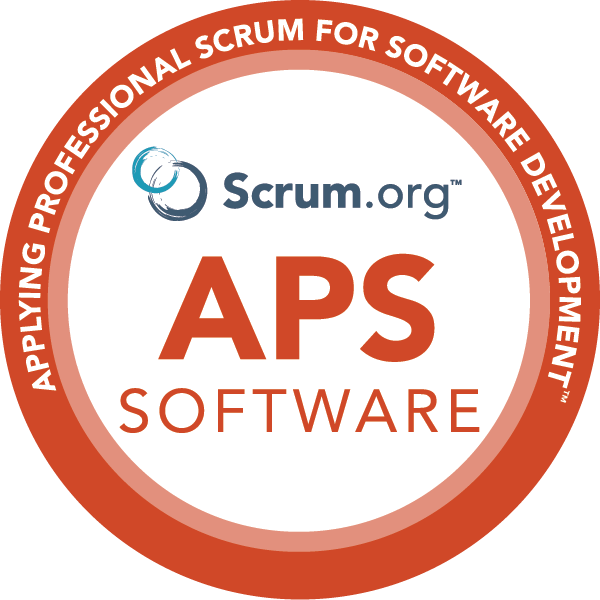AI Training Now Available:
Expand Your Skills in the Era of Intelligent Innovation. Join our latest courses to stay ahead in the evolving AI landscape.

Applying Professional Scrum for Software Development (APS-SD)
Great software development using Scrum requires the seamless integration of the tool, a well-functioning team, and software development best practices. Improving is offering the 3-day Scrum.org Applying Professional Scrum for Software Development (APS-SD) certification course. This course is about software craftsmanship under a Scrum framework.
USD

Applying Professional Scrum for Software Developers (APS-SD) Course Details
The Professional Scrum Developer course is an exercise-driven class that teaches students how to work in a team, using advanced software engineering practices such as Test Driven Development and Continuous Integration, your technology platform, and the Scrum framework to develop high-quality, deployable, functionality.
Classes are exercise-driven, with students working in self-organizing teams to develop “done” increments from a realistic product backlog, all the while learning how to write maintainable, tested, integrated code. Students will learn through hands-on exercises and will be challenged to think on their feet to better understand what to do when they return to their workplaces.
Applying Professional Scrum for Software Developers (APS-SD) Learning Outcomes
Scrum Basics and Theory - What is Scrum, and how has it evolved? Why does Scrum work, and what are its core principles? How are the Scrum principles different from those of more traditional software development approaches, and what is the impact? The course simulates being part of a Scrum team to expose students to the core Scrum concepts in action. Students learn how to work as part of a Scrum team, which requires them to understand techniques for self-organization. Through the course, students develop skills in identifying and overcoming common Scrum Team dysfunctions.
Scrum Framework and Meetings - How Scrum theory is implemented using time-boxes, roles, rules, and artifacts. How can these be used most effectively, and how can they fall apart? How to use Scrum Planning to plan a project and estimate its cost and completion date.
Tools - APS-SD courses teach students how to leverage different development tools to employ Scrum practices. Students learn how to map specific tool features and functions to the general Scrum practices they must use to be effective team members.
Practices – APS-SD courses cover all of the technical practices that team members need to successfully implement and ship functionality. These include coding practices like test-driven development, continuous integration, and refactoring; architecture practices such as emergent architecture and evolutionary database development; release management practices like planning, requirements definition, and shipment; and quality assurance practices from defining "done" to pair programming, version control, and acceptance testing.
Who Is The Applying Professional Scrum for Software Developers (APS-SD) Course For?
This course is suitable for any member of a software development team—architect, programmer, database developer, tester, etc.
Entire teams are encouraged to attend and experience the course together, but individuals are welcome too.
Attendees will self-organize to form cross-functional Scrum teams. These teams require an aggregate of skills specific to the selected case study.
Product Owners, Scrum Masters, and other stakeholders are welcome too, but keep in mind that everyone who attends will be expected to commit to work and pull their weight on a Scrum team.
Applying Professional Scrum for Software Developers (APS-SD) Assessment & Certification
As part of the course, the student is invited to take the Professional Scrum Developer assessment through Scrum.org. While successfully passing the certification is not guaranteed, the APS-SD course will well prepare the student for the assessment and significantly improve his/her probability of passing.